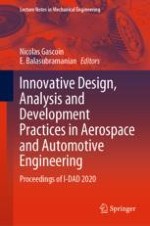
2021 | OriginalPaper | Chapter
3D Digitizing Practice-Advantage in Reverse Engineering with Accuracy Boost
Authors : C. J. Thomas Renald, S. Yuvaraj, J. David Rathnaraj
Published in: Innovative Design, Analysis and Development Practices in Aerospace and Automotive Engineering
Publisher: Springer Singapore
Activate our intelligent search to find suitable subject content or patents.
Select sections of text to find matching patents with Artificial Intelligence. powered by
Select sections of text to find additional relevant content using AI-assisted search. powered by